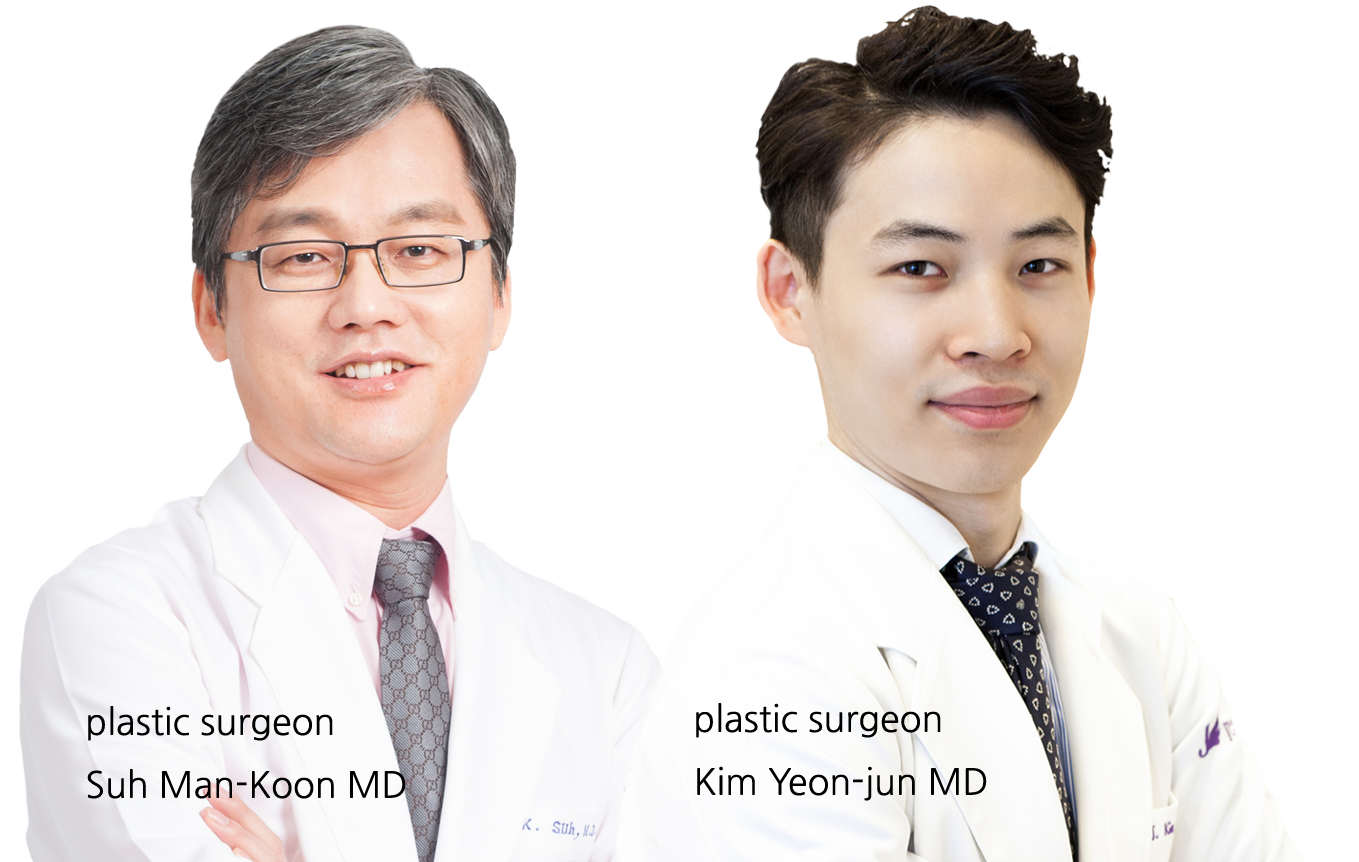
Natural-looking and Beautiful Nose
Generally, having a low nose bridge makes your face look flat and dull impression. By raising the nose through rhinoplasty, the face will look slimmer and change your look.
Augmentation rhinoplasty raises the nose which not only improves its shape it also makes the face look slimmer. The procedure is not just about augmenting the nasal bridge, it’s important to keep the facial balance by deciding the right height for the patient’s nose based on their facial features.

Most of the incisions are made inside the nostrils assuring the scars won’t be visible. Closed rhinoplasty should be performed by well-experienced specialist plastic surgeons since the limited access to cartilage and bones makes it a trickier surgery.

With open rhinoplasty, a plastic surgeon can precisely correct each cartilage and bones by making a small incision in the columella between the nostrils and then makes additional incisions inside the nostrils to completely exposing the structure of the nose. The advantages of this method is that a surgeon can easily see the internal structure of the nose and to operate correctly.
Open rhinoplasty is used when you have a more sophisticated correction on the tip of the nose.
Those who have been suffering from severe sinusitis or have breathing problems due to a stuffy nose may be able to undergo surgery with functional rhinoplasty simultaneously, after a detailed examination.
![]()
Silicone implant is the most common and oldest implant for rhinoplasty. It is not absorbed or does not change in shape even after a long lapse of time. In addition, it is easy to form silicone into various shapes, considering the patient’s facial characteristics.
If the patient’s skin is too thin, an implant may be seen through the skin. Proper implants should be used considering the patient’s skin thickness and conditions.

Gore-Tex, widely applied to vascular surgery, has been proven to be safe. As Gore-Tex is softer than Silicone implant, it can be used for those who have thin skin. In addition, it looks very natural after an operation.
Gore-Tex easily assimilates into the tissues and develops few complications such as foreign body reactions due to its microscopic holes. Because of its soft texture, it is difficult to sculpt it into a desired shape or to insert it into a proper location. Therefore, surgery using Gore-Tex should be performed by well-experienced and skilled rhinoplasty (nose surgery) specialist.

Silitex is an implant consisting of silicone on the front and thin Gore-Tex on the rear. It has the advantages of both silicone and Gore-Tex. If the patient has extremely thin skin, using autologous fascia or dermis may be added to the front of an implant, instead of Gore-Tex.

If you are not comfortable with autologous cartilage or afraid of scars or pain, donated cartilages can be used for your procedure. Donated cartilages are used as a rhinoplasty material after being disinfected and stabilized. They are FDA approved (U.S.A.)

Donated tissue is processed to remove donor cells and allergenic epitopes to prevent rejection and other types of reactions. A beautiful and natural-looking nose can be sculpted Using donated dermis.

The autologous dermis, collected from the area on the upper buttock at the end of the spine, is used for nasal bridge augmentation of those who have extremely thin skin.
1Facial Plastic Surgery Clinics of North America (Link)

A fascia is a thin sheet that covers muscles. Fascia used for rhinoplasty is collected from the inside of the scalp above the ears. After the surgical incision is made on the scalp, they facia are easy to collect and there is no visible scarring. Fascia are generally used when operating on patients with thin skin.

Ear cartilages, the most widely used autologous cartilages, can be easily collected and do not leave any scars after being collected. They are generally used for nose tip augmentation and sometimes for precise nasal bridge augmentation.

Septal nasal cartilages, collected from the inside of the nostrils, do not require any incisions. As they are straight, they are used as a nasal bridge support to create a sharp and prominent nose.

When septal nasal cartilages or ear cartilages are not enough, Rib cartilages can be collected. Rib cartilages are used to extend a firm and extremely short nose or a shrunk nose due to the side effects of the previous operation, and extremely upturned nose.
JW has a special operative techniques to prevent the warping of rib cartilage graft (concentric carving technique and multi-layered graft technique).
We can minimize side effects by using autologous cartilages or by using fascia and cartilages together.
JW nose team constitutes 2 nose specialists with know-how from various clinical experiences, as well as dedication to achieving the best result by medical research.
